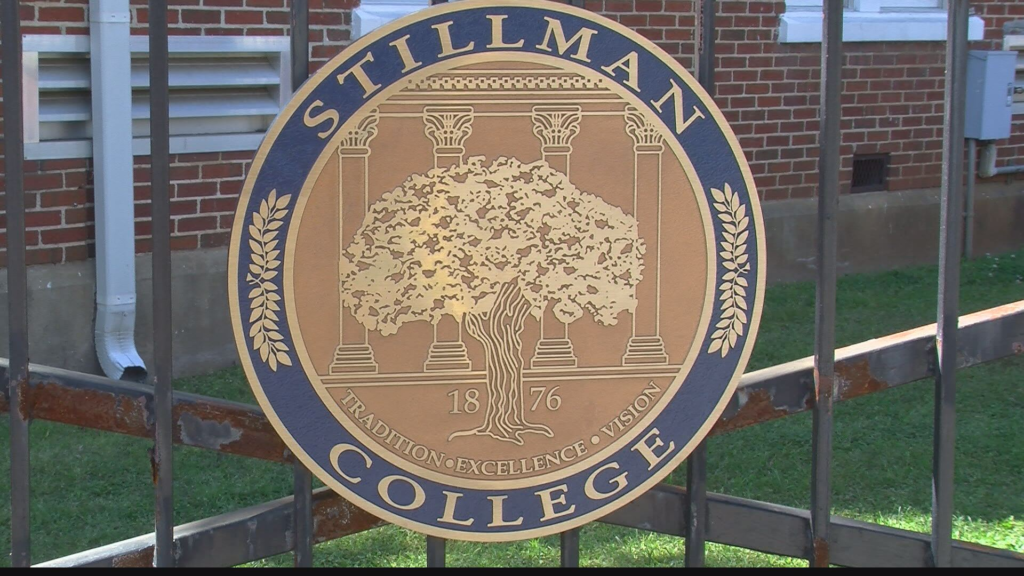Sections
About
Connect With Us
Stillman College is joining a growing group of colleges and universities that are abandoning the U.S. News Best College rankings.
While more than 40 law schools and more than a dozen medical schools have stopped providing information to the organization, Stillman is the first Historically Black College or University making the move.
Stillman President Dr. Cynthia Warrick said the U.S. News Best Colleges rankings does not accurately represent the impact that Stillman has on the community, the state or the nation.
“We have wonderful faculty,” Warrick said. “Most of our faculty have PhD terminal degrees, so you are not taught by graduate assistants but by professors who have been doing this a while. That is what I want people to know. Go to (Stillman’s) website and learn about the college. Don’t base your decision on a ranking that really has no context.”
According to multiple scholastic blogs, including PrepScholar, U.S. News College rankings are viewed as the “gold standard” of college lists, meaning thousands of college-bound students and their parents rely on the organization to help make their higher education decisions.
But Warrick said the report can’t accurately portray the value of an education from Stillman College, nor does it showcase the college’s investments into the future.
“U.S. News uses graduation rates as its No. 1 measurement quality in terms of the rankings,” said Warrick.
That’s a problem for schools like hers, because there are outstanding factors for graduation rates at smaller schools.
“How they measure graduation rates is based on first-time, full time freshman and following them through six years,” she said. “The current cohort rankings today is the 2015-16 years when Stillman was having serious financial challenges. We lost over 200 students, with a 27% graduation rate.”
Currently, on the U.S. News Best College rankings, Stillman College is:
Warrick said withdrawing was a tough decision, but she feels the metrics are flawed, misleading to prospective students and don’t accurately reflect the quality of a Stillman education.
“I think what should happen if U.S. News wants to continue and have a fair rankings process, they should have some kind of external ranking process,” Warrick said. “They should have some type of external panel of experts to talk about these factors so we can get a fair ranking system because I think competition is good. We don’t want to avoid competition. I think if you have all the data together, we would get more students,” Warrick said.
According to its website, the U.S. News calculates 10 distinct overall rankings where colleges and universities are grouped by their academic missions.
The top performers in each ranking get an overall score of 100.
Other schools are rated on a 0-99 scale reflecting how far they are from that top-ranked school.
On Monday, Warrick sent the following letter addressing the decision:
Stillman College withdraws from the U.S. News and World Report rankings
Graduation is the most important ceremony that colleges and universities conduct. On May 6, 2023, at 9 a.m., 95 Stillman students were recognized for staying the course in the College’s 147th Commencement.
This graduating class represents all aspects of diversity; they range in ages in their 20s and 50s, and many are the first in their families to graduate with a bachelor’s degree. Some are parents, and their children have witnessed their daily dedication and commitment to achieving their dream. Sixty-seven percent (67%) of our Class of 2023 graduated with honors, and most represent organizations and institutions – athletics, band, choir, student government, Greek fraternities and sororities, and service organizations – clocking thousands of hours in service to the campus and the community. In the liberal arts tradition, all Stillman graduates have developed, presented, and defended a senior thesis, and most of our graduates are from Alabama. They have worked hard to achieve this milestone, while also working their way through college in full-time and part-time jobs to support their needs and their families.
This class persevered through the COVID-19 pandemic, finishing their degrees in as little as two years while others took longer. Two seniors serve on the Honda Campus All-Starts Challenge Quiz that won the National Championship, demonstrating the academic excellence of a Stillman education. Most of the graduates will go on to attend masters and doctoral programs; some have already committed to Harvard University, Tulane University, and the University of Alabama.
However, there are organizations that do not accurately represent the impact that a Stillman degree has on the community, the state, and the nation. Chief among these organizations is the U.S. News Best Colleges rankings, which do not accurately measure and portray the value of a Stillman College education, nor the tremendous investments and outlook for our future, as we reshape our liberal arts profile to align with emerging workforce trends, like cybersecurity and data analytics.
I write and share this letter to inform our students, alumni, community, and stakeholders that Stillman College will withdraw from the U.S. News Best Colleges Rankings, effective immediately, for the following reasons:
Incomplete metric of graduation rates
The U.S. Department of Education measures a school’s graduation rate by a school’s full-time, first-time degree- or certificate-seeking students who complete their degree or certificate within 150 percent of the published length (six years for a baccalaureate degree) of the program in which they are enrolled. The department has measured graduation rate using this calculation since 1996, by race and gender and type of institution. No matter the institution type, African Americans’ graduation rates are significantly lower than whites. Thus, institutions with larger percentages of African American students (HBCUs) have lower graduation rates simply by racial makeup. Using this calculation as a quality measure for institutions is not a matter of comparing apples to apples. Additionally, the socioeconomic status of the institution’s student population is another factor that explains lower graduation rates. Because Stillman’s student population is greater than 70% Pell eligible, students with lower socioeconomic status predict lower graduation rates; not the quality of instruction or environment. The National Science Foundation has reported annually that HBCUs graduate more African American STEM students and are responsible for producing the Black middle class in America; these outcomes are not represented in the U.S. News rankings. Stillman has found that the circumstances of poverty challenges these students to make decisions that call them in and out of enrollment. Yet, Stillman remains committed to them. How does U.S. News measure our commitment?
The National Center for Education Statistics IPEDS data report that the graduation rate for female students is consistently higher than male students; and women make up nearly 60% of all college students today. Stillman’s male enrollment is currently 44%; the national male graduation rate is significantly lower than that of female students. Also, Stillman has more than 100 students who are parents. We are committed to all our students’ success and support them through life’s happenings. Stillman should be rewarded points for attracting and retaining more male students to graduation, but this metric is not included in the ranking formulas.
Graduation rates are also a measure of retention, but there are other factors that should be considered, like the COVID-19 pandemic and its impact on small, private colleges. Additionally, the current cohort that the Department of Education uses to measure an institution’s graduation rate is the first-time, full-time freshmen in 2015. As mentioned above, Stillman was faced with severe financial challenges and the administration eliminated several athletic programs, causing an exodus of more than 200 students. The rankings – based predominantly on graduation rate – do not explain Stillman’s drop in retention as a factor of student athletes transferring. Parents and students need to understand how the graduation rate is calculated; otherwise, they are misled into thinking that the rate represents the most recent class of graduates, rather than the first-year students of seven years earlier.
The Carnegie Classification is the leading framework for recognizing and describing institutions of higher education in the United States. Carnegie categorizes Stillman as a high transfer-in institution, with at least 20% of entering undergraduates as transfer students. Transfer students are not included in the U.S. News graduation rate calculation; thus, no credit is given in the rankings for transfer students.
We made Stillman’s admissions test-optional in 2018. Most African American students do not have the benefit of test prep programs in middle and high schools, and most parents of first-generation college students are not aware of these programs. Additionally, families with low socioeconomic status do not have the resources to put toward this luxury. We also noticed that African American high school students expressed anxiety over whether they could attend college because of what was considered an unacceptable test score. Basing admissions on GPA and not requiring standardized tests for admissions aligns with our mission to provide opportunities for diverse populations.
According to the NSF’s National Center for Science and Engineering Statistics report on Baccalaureate Origins of US Research, Stillman College graduates earned 36 doctorates between 2010 and 2020. Among undergraduate HBCUs, Stillman ranks in the Top 20 for this prestigious outcome. Yet, U.S. News does not take this outcome into its ranking calculations. Social mobility is only 5% of the rankings. Given our student makeup and size, Stillman deserves recognition for exceptional social mobility.
We are recommending that the U.S. News and World Report Best Colleges rankings create an independent task force including outside stakeholders to reevaluate the indicators used in developing the rankings. By incorporating factors that promote success at HBCUs like Stillman College, our students’ achievements and impact will be appropriately valued.
Cynthia Warrick, PhD RPh,
President
Stillman College
Moving forward, Warrick said she hopes prospective students can look beyond rankings and discover the value of Stillman.
Warrick is retiring at the end of June, and Stillman expects to name their next president by the end of the month.
WVUA 23 engages consumers on multiple platforms with relevant and essential news, weather, sports and entertainment content for the communities of West Alabama, the Birmingham DMA and the larger University of Alabama community. We provide students with hands-on learning experiences in an environment that encourages the highest ethical journalistic standards.
WVUA 23 is a commercial television station owned and operated by the University of Alabama’s College of Communication and Information Sciences.
© 2024 WVUA 23.










More Stories
Black Enterprise – The Premier Resource for Black Entrepreneurs and Career, Tech, and Money Content for Black People – Black Enterprise
Morris Brown Is Back! ATL HBCU Regains Accreditation After 20 Years – Capital B Atlanta
I Went to Howard With Kamala Harris. Here’s What It Taught Us. – POLITICO